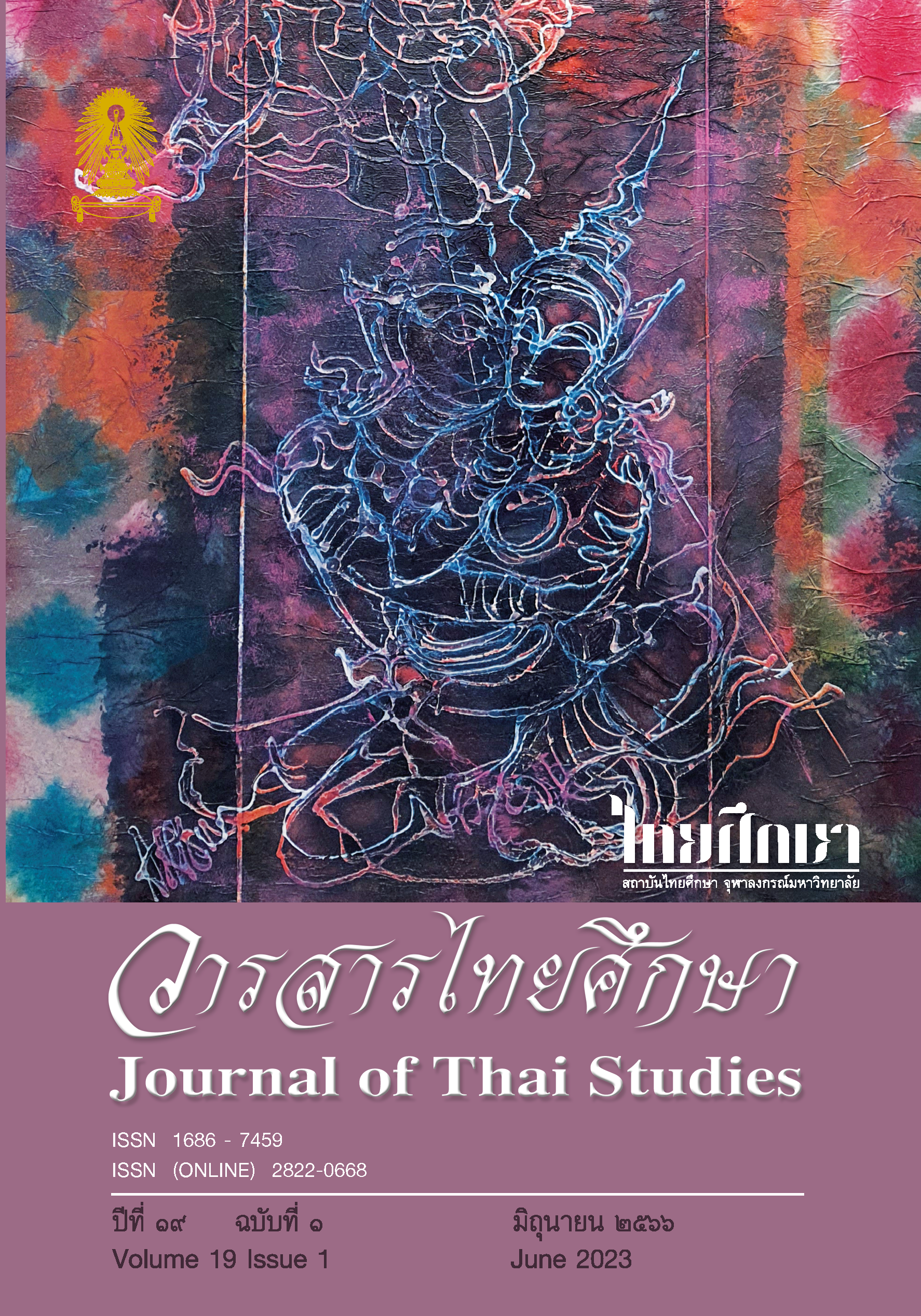Long Song Natadontree: Creative Dance of Long Song from Thai Classical Dance-Drama to Likay
Main Article Content
Abstract
The idea for the research study for this article came from likay performances where the performers wear elaborate costumes mimicking the style of dance-drama. The plot is taken from the story of Phra Aphai Mani, the scene of the Battle of the Nine Armies and Phaluek City. There is a
dance sequence for Phra Aphai Mani before going out to fight with the nine armies of Langka. The style of the performance is Likay Song Krueang (Thai traditional operetta with elaborate costumes). The lyrics describe
the typical likay costume elements and accessories. The performance can be divided into four parts: (1) the entrance on to the stage; (2) the introduction of the character and narration of the background story; (3) bathing and donning
of the costume; and (4) the dance while exiting the stage. The choreographyis based on the principles of combining two forms of dance, which is the application of the bathing ritual dance sequences in a dance performance that includes the principal dance sequence (tha ram lak), the extension dance sequence (tha ram khayai), the linking dance sequence (tha cheuam) and the dance sequence suffix in music (tha rub), as well as foot work and
the insertion of likay dance movements. Therefore, the performance of this grooming ritual with music and dance has the dance form of a dance-drama combined with the dance movements of likay. This is a creative style that
conveys the idea of other types of creative performances.
Downloads
Article Details

This work is licensed under a Creative Commons Attribution-NonCommercial-NoDerivatives 4.0 International License.
Journal of Thai studies is licensed under a Creative Commons Attribution-Noncommercial-NoDerivatives4.0 Intenational (CC BY-NC-ND 4.0) licence, unless otherwise stated. Plese read our Policies page for more information on Open Access, copyright and permissions.
References
Burawat, P. (2020). Dramatic Composition for Creative Dance in the type of Thai Classical Solo Dance. Journal of Fine and Applied Arts
Chulalongkorn University, 7(1), 202-216.
Homnan, P. (2021). The Article of Performing Arts on solo dance entitled “Usachomsuan”. Journal of Fine and Applied Arts Chulalongkorn University, 8(2), 186-204.
Ketlek, S. (2013). Dance Patterns, Styles and Postures depicting the female protagonist’s process of dressing in Inao court drama. (Degree of Master of Arts in Thai Dance). Chulalongkorn University, Bangkok,Thailand.
Mittiraroch, N. (2019). The Analysis of Viroj Larnhomhual trope’s Li-ke’ Lookbot Performance Characteristic : A case study of the Jantakorop Story. (Degree of Master of Arts in Thai Dance). Bunditpatanasilapa Institute, Bangkok, Thailand.
Saisunee, K. (2019). The Dance Techniques and Choreography for the Bathing and Dressing Dances of the Male Protagonists in the Story of the Drama Ngo Pa. (Degree of Master of Arts in Thai Dance). Bunditpatanasilapa Institute, Bangkok, Thailand.
Sanguanseriwanit, P. (1995). Due to “Zakur”. Art & Culture Magazine, 16(8), 57-63.
Sooksom, V. (2002). Long Song Tone : dance patterns in Lakhon Nai-Inao. (Degree of Master of Arts in Thai Dance). Chulalongkorn
University, Bangkok, Thailand.
The Policy of the National Culture Commission Office. (1996). Likey [Musical folk drama]. Bangkok: Kurusapa Printing Ladphrao.
Tramote, M. (1975). kan lalen khong thai [Thai Entertainment]. Bangkok: The Fine Arts Department.
Virulrak, S. (1996). Likey [Musical folk drama]. Bangkok: Kurusapa Printing Ladphrao.
Vingvorn, S. (2015). Bot lakhon nok baep luang : kan phinit tuabot su krabuankan sadaeng [Lakhon Nok of the royal court : Analysis
of performing arts scripts] In Natayawannakadeesamohson [Thai Traditional dance of the Royal Association of Literature] (p. 91-124).
Bangkok: Department of Literature, Faculty of Humanities, Kasetsart University.


